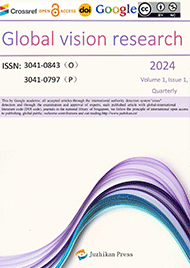 65 84368249
65 84368249 info@juzhikan.asia
info@juzhikan.asia 65 84368249
65 84368249 info@juzhikan.asia
info@juzhikan.asia
Yuan Yang Rongyu, Zhonghua Road Subdistrict, Ganjingzi District, Dalian City, Liaoning Province 116033
Abstract:Folk symbolism in literary works is not merely a cultural tool of expression but also a multi-layered carrier of history, society, and emotion. This paper systematically reviews the theoretical foundation, forms of expression, and social functions of folk symbolism in literary works, revealing its deep significance in cultural transmission, the maintenance of social order, and its critical and rebellious roles. By analyzing the definition of symbolic forms, their transmission functions, and the fluidity across cultures, this study aims to clarify how these symbols shape collective identity and stimulate social reflection in various contexts. Literary works, through the use of folk symbolism, skillfully convey complex cultural connotations, thereby enriching the structure and meaning of both form and content.
Keywords: Folk symbolism, literary works, cultural transmission, social functions, multi-layered meaning
References
[1] Zhao Han. A Study of Folk Aesthetic in Tie Ning's Literary Works [D]. Mudanjiang Normal University, 2022.
[2] Zhou Yinyin. The Elements and Value of Waterside Culture in the Local Novels of Salt-City Authors: Taking the Works of Cao Wenxuan, Li Yougan, and Cao Wenfang as Examples [J]. Journal of Yancheng Teachers University: Humanities and Social Sciences Edition, 2022, 42(2):26-36.
[3] Wang Xudi. The Fusion of Emotion and Nature: An Analysis of the Ethnic Minority Work *Where the Magpies Sing* [J]. Huaxi, 2022(14):128-130.
[4] Zhou Xiao. The Works and Regional Film Studies of Hebei’s Young Directors: Taking the Films of Hao Jie, Cai Chengjie, and Xu Lei as Examples [J]. Popular Literature and Art, 2023(22):97-99.
[5] Zhang Rongrong. An Analysis of the Artistic Prose Style in Wang Zengqi's Novels [J]. Chinese Artists, 2022(5):61-63.